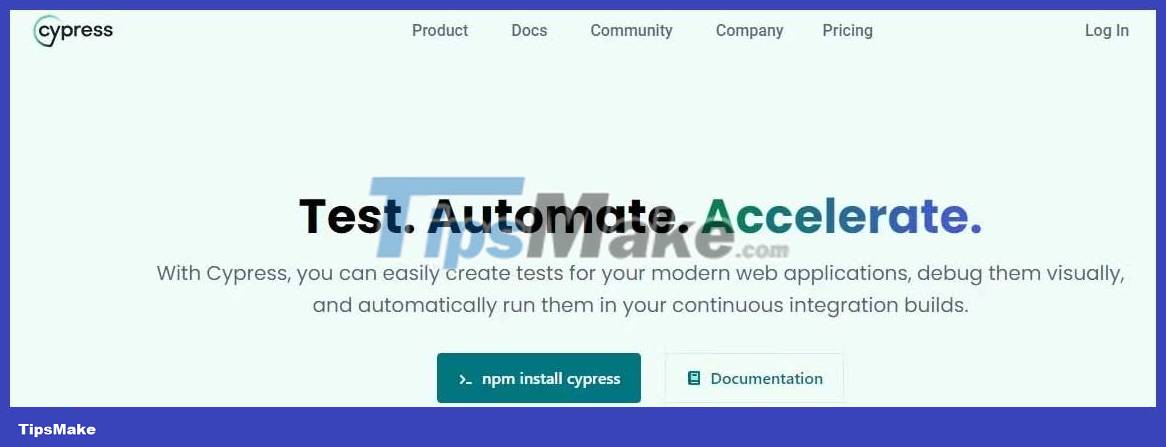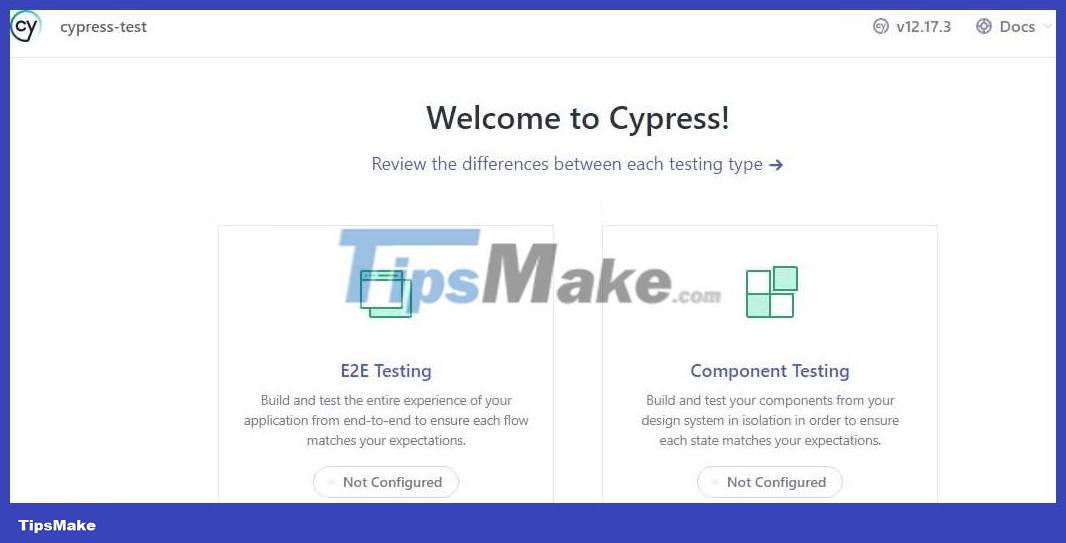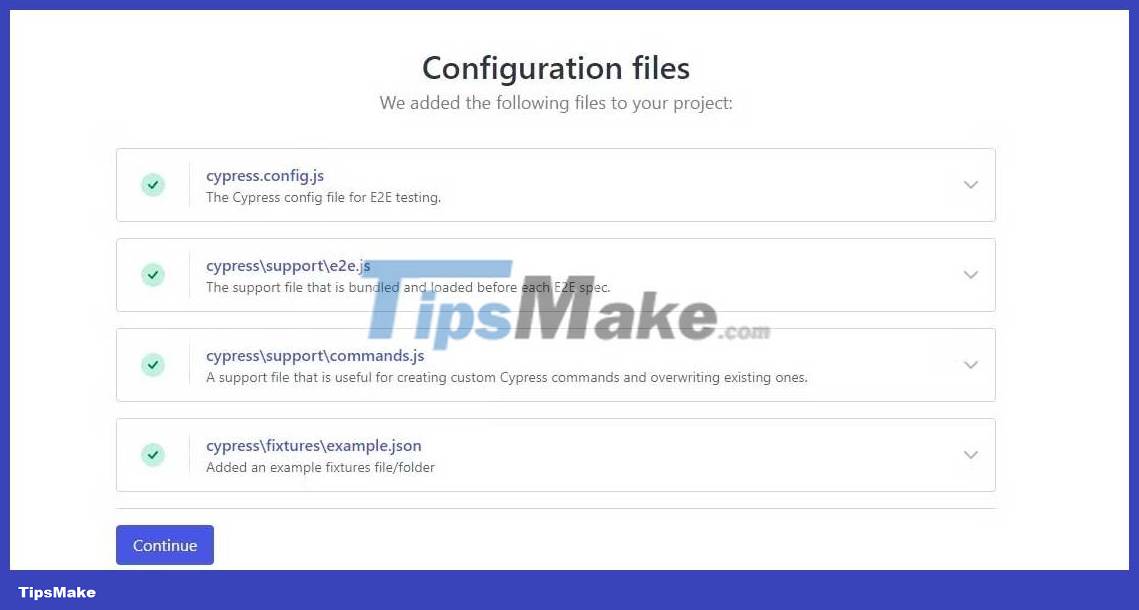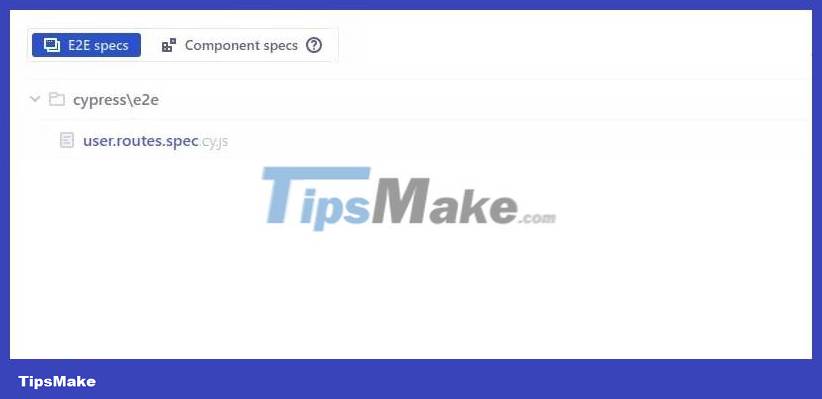How to test Express.js REST API with Cypress

Cypress is a popular testing framework specifically for JavaScript applications. Although it is primarily designed to test UI elements and interactions with interface elements in the browser, it still tests APIs well. You can use this framework to test RESTful AI via HTTP queries and validate responses.
Cypress allows you to write comprehensive tests that cover the entire work cycle of your web application.
Instructions for testing API with Cypress
Cypress helps you verify that the API is working as expected. This process typically includes testing API endpoints, input data, and HTTP responses. You can verify integration with any external services, and confirm debugging mechanisms work correctly.

Test APIs to ensure they are efficient, reliable, and meet the needs of the applications that depend on them. It helps identify and correct errors early, preventing problems from occurring during production.
Cypress is a great UI testing tool, used by several popular JavaScript frameworks. The ability to create and test HTTP queries makes it equally effective in testing APIs.
npm install cypress --save-devCypress performs the above task by using Node.js as the engine for creating HTTP queries and processing responses.
Create the RESTT Express.js API
To get started, create an Express web server, and install this package in the project:
npm install corsNext, add the Cypress package to the project:
npm install cypress --save-devFinally, update the package.json file to include this test script:
"test": "npx cypress open"Identify API controls
In real cases, you will make API calls to read and write data from a database or external API. However, in this example, you will simulate and test API calls by adding and fetching user data from an array.
In the root of the project directory, create the file controllers/userControllers.js , and add the following code:
First define a registerUser controller function that will manage the user's registration path. It will retrieve user data from the query body, create a new user object and add it to the users array . If this process is successful, it will respond with status code 201 and notify that it has registered this user.
const users = []; exports.registerUser = async (req, res) => { const { username, password } = req.body; try { const newUser = { username, password }; users.push(newUser); res.status(201).send({ message: 'User registered successfully' }); } catch (error) { console.error(error); res.status(500).send({ message: 'An error occurred!!' }); } };Add a second function - getUsers - to retrieve user data from the array, and return it as a JSON response.
exports.getUsers = async (req, res) => { try { res.json(users); } catch (error) { console.error(error); res.status(500).send({ message: 'An error occurred!!' }); } };Finally, you can also simulate login attempts. In the same file, add this code to check if the provided username and password match any user data in the users array :
exports.loginUser = async (req, res) => { const { username, password } = req.body; try { const user = users.find((u) => u.username === username && u.password === password); if (user) { res.status(200).send({ message: 'Login successful' }); } else { res.status(401).send({ message: 'Invalid credentials' }); } } catch (error) { console.error(error); res.status(500).send({ message: 'An error occurred!!' }); } };Define API roadmap
To define routes for your Express REST API, create a routes/userRoutes.js file in the root directory, and add this code to it:
const express = require('express'); const router = express.Router(); const userControllers = require('./controllers/userControllers'); const baseURL = '/v1/api/'; router.post(baseURL + 'register', userControllers.registerUser); router.get(baseURL + 'users', userControllers.getUsers); router.post(baseURL + 'login', userControllers.loginUser); module.exports = router;Update the Server.js file
Update the server.js file to configure the API as follows:
const express = require('express'); const cors = require('cors'); const app = express(); const port = 5000; app.use(express.json()); app.use(express.urlencoded({ extended: true })); app.use(cors()); const userRoutes = require('./routes/userRoutes'); app.use('/', userRoutes); app.listen(port, () => { console.log(`Server is listening at http://localhost:${port}`); }); module.exports = app;Set up the test environment
With the testing API in place, you're ready to set up your testing environment. Start the programming server with this terminal command:
node server.jsNext, run the test script command in a separate terminal:
npm run testThis command will open the Cypress desktop client, providing a testing environment. Once it opens, click the E2E Testing button . End-to-end testing processes ensure that you test the entire Express API, meaning Cypress will have access to the web server, routes, and related controller functions.

Next, click Continue to add the Cypress configuration file.

Once the setup is complete, you will see a new Cypress folder in the project. Cypress will also add a cypress.config.js file that contains configuration settings for your testing.
Go ahead and update the file to include the server base URL as follows:
const { defineConfig } = require("cypress"); module.exports = defineConfig({ chromeWebSecurity: false, e2e: { baseUrl: 'http://localhost:5000', setupNodeEvents(on, config) { }, }, });Write test cases
Now you're ready to write some test cases. First, select the browser that Cypress will open to run the tests from the options available on the Cypress client.

Next, click the Create new spec button to create the test file, and provide a name. Then click Create spec .

Now open the file cypress/fixtures/example.json , and update its content with the user authentication information below. Fixture is a file that contains static test data that you can use in test cases.
{ "username": "testuser", "password": "password123" }Cypress provides the cy.request method to make an HTTP request to the web server. You can use it to test different types of HTTP endpoints, which manage individual operations, including GET, POST, PUT, and DELETE.
To test the 3 API roadmap you defined from the beginning, start by describing a test case for the registration endpoint. This test case will verify that the endpoint is working correctly by successfully registering new users and confirming correct information.
Open the file cypress/e2e/user.routes.spec.cy.js and update its content with the following code:
describe('User Routes', () => { it('registers a new user', () => { cy.fixture('example').then((testUser) => { cy.request({ method: 'POST', url: `${baseUrl}/v1/api/register`, body: testUser, }).then((response) => { expect(response.status).to.eq(201); expect(response.body.message).to.eq('User registered successfully'); }); }); });
In this test, Cypress will load the test data in the fixture file, and create POST queries to the specified endpoint with the data in the query body. If all assertions pass, the test case is successful. Otherwise, it will fail.
It's worth noting here that the syntax for Cypress testing is almost identical to the syntax used in the Mocha tests that Cypress has adopted.
Now describe the test for the users route . This test will verify that this response contains user data when making queries to this endpoint. To achieve that, add the following code inside the test describe block .
it('gets users data and the username matches test data', () => { cy.fixture('example').then((expectedUserData) => { cy.request({ method: 'GET', url: `${baseUrl}/v1/api/users`, }).then((response) => { expect(response.status).to.eq(200); const username = response.body[0].username; expect(username).to.eq(expectedUserData.username); }); }); });Finally, include a test case that will check the login endpoint and insert a response status of 200, indicating successful login.
it('logs in a user', () => { cy.fixture('example').then((loginData) => { cy.request({ method: 'POST', url: `${baseUrl}/v1/api/login`, body: loginData, }).then((response) => { expect(response.status).to.eq(200); }); }); }); });To run this test, return to your Cypress-managed browser instance and select the specific test file you want to run.

The Cypress test runner will run the tests and record the results, showing the pass or fail status of each test case.

The example above illustrates how you can test different routes and their corresponding controller functions to ensure their functionality and behavior work as expected.
Overall, Cypress is a great tool for testing web applications, including both front-end and back-end. Try it and feel the great benefits it brings!
You should read it
- eQuiz - Multiple choice test on programming language C - part 1
- How to implement role-based access control in Express.js REST API using Passport.js and JWT
- Set of multiple choice questions for programming with P8 prizes
- Test on C programming P6
- A set of multiple choice questions for programming has a P2 prize
- Multiple choice questions about programming with P1 prize
- Test of programming C P5
- eQuiz - VB.NET testing test - Part 1
May be interested
- How to implement T-Test in Excel
 t-test is a way to decide whether there is any statistically significant difference between data sets, using student t distribution.
t-test is a way to decide whether there is any statistically significant difference between data sets, using student t distribution. - What is a stress test?
 stress testing is the process of determining the ability to maintain a certain level of efficiency in unfavorable conditions of a computer, network, program or device.
stress testing is the process of determining the ability to maintain a certain level of efficiency in unfavorable conditions of a computer, network, program or device. - What is fps test? Popular free fps test software today
 top 5 free and popular fps testing software today. this is the savior to help gamers have a smoother, lag-free gaming experience.
top 5 free and popular fps testing software today. this is the savior to help gamers have a smoother, lag-free gaming experience. - Answers to Test Brain Level 1 to 60 (updated continuously)
 this is the brain test all levels answers, the easiest brain test solution to support you when you encounter difficulties with brain test's conundrum.
this is the brain test all levels answers, the easiest brain test solution to support you when you encounter difficulties with brain test's conundrum. - Answering questions about the reasons for using a keyboard wrist rest
 join tipsmake to find out what a keyboard armrest is and how to use a mechanical keyboard armrest most effectively.
join tipsmake to find out what a keyboard armrest is and how to use a mechanical keyboard armrest most effectively. - How to safely stress test overclocked RAM, GPU and CPU
 stress testing tests the stability of your pc by pushing it to its limits. by the time you finish reading this article, you will be able to stress test your cpu, gpu, and ram.
stress testing tests the stability of your pc by pushing it to its limits. by the time you finish reading this article, you will be able to stress test your cpu, gpu, and ram. - Test TCP / IP knowledge
 a simple and basic test of knowledge around the tcp / ip protocol. you just need to choose which answer is the best and see the final result we give ...
a simple and basic test of knowledge around the tcp / ip protocol. you just need to choose which answer is the best and see the final result we give ... - What is IELTS? Things to know about IELTS
 ielts is currently a certificate of english which is required by many agencies, businesses and international students. so what does ielts mean?
ielts is currently a certificate of english which is required by many agencies, businesses and international students. so what does ielts mean? - How to test VGA with Furmark tool
 unlike a benchmark tool, furmark is mainly used to check if your graphics card is stable at factory settings.
unlike a benchmark tool, furmark is mainly used to check if your graphics card is stable at factory settings. - How to test the Windows 10 microphone
 you may have plugged in good quality headphones, but for some reason, windows laptops still try to record with its awful built-in microphone. the following article will show you how to test the windows 10 microphone.
you may have plugged in good quality headphones, but for some reason, windows laptops still try to record with its awful built-in microphone. the following article will show you how to test the windows 10 microphone.










 How to use the Nest.js exception filter for error handling
How to use the Nest.js exception filter for error handling How to build a chatbot using Streamlit and Llama 2
How to build a chatbot using Streamlit and Llama 2 How to use gradient colors for Canva text
How to use gradient colors for Canva text Lesson 2: Learn about Containers in Bootstrap 5
Lesson 2: Learn about Containers in Bootstrap 5 How to create typing effects using CSS
How to create typing effects using CSS Instructions for using Sveltestrap
Instructions for using Sveltestrap